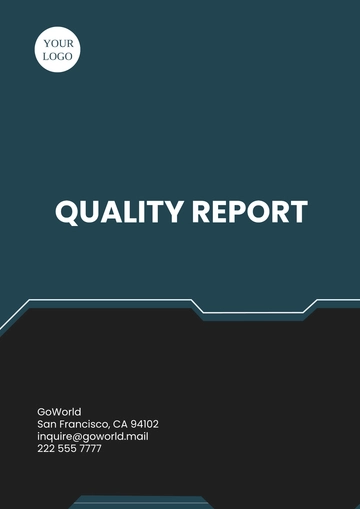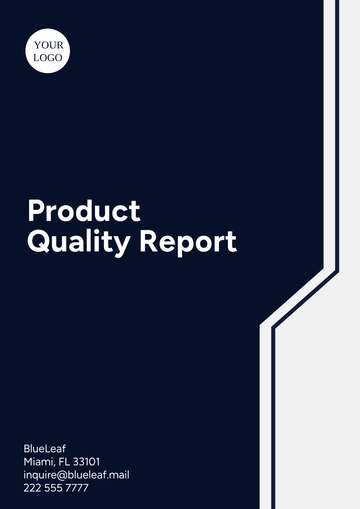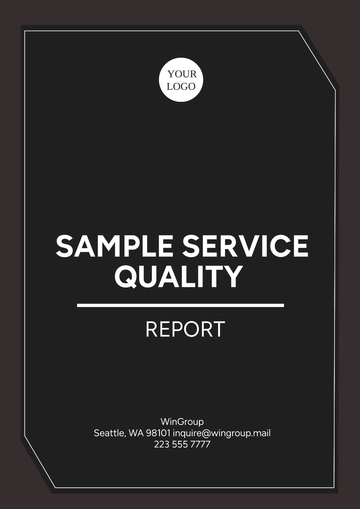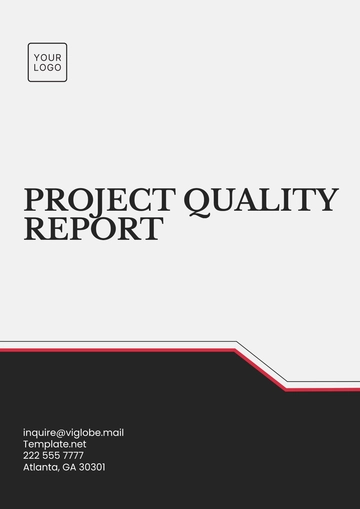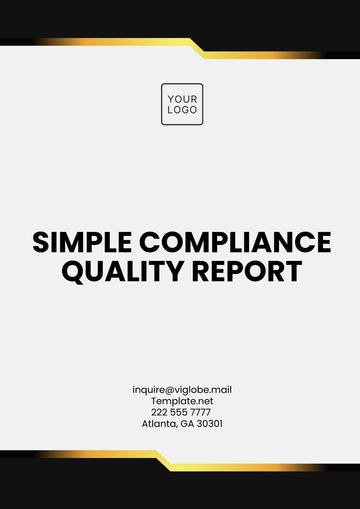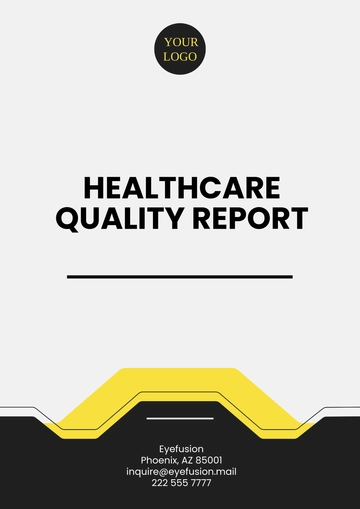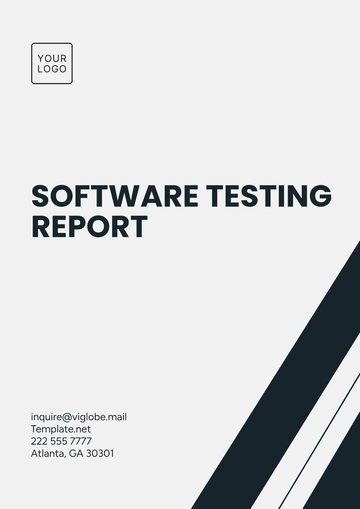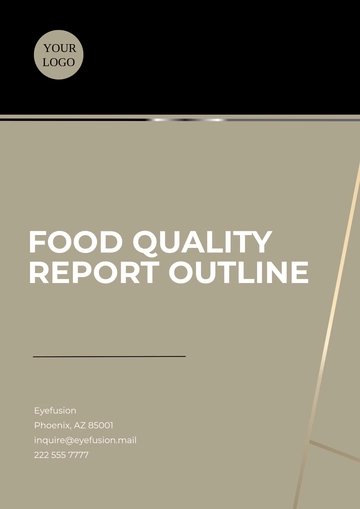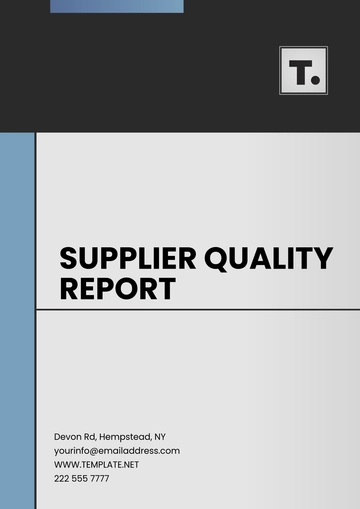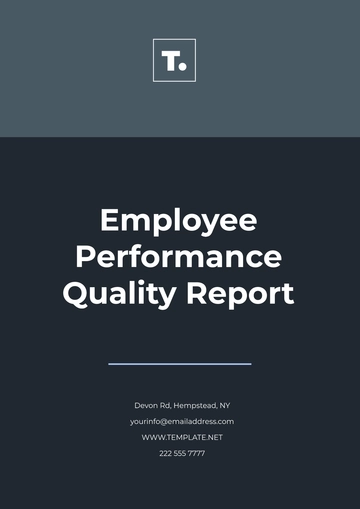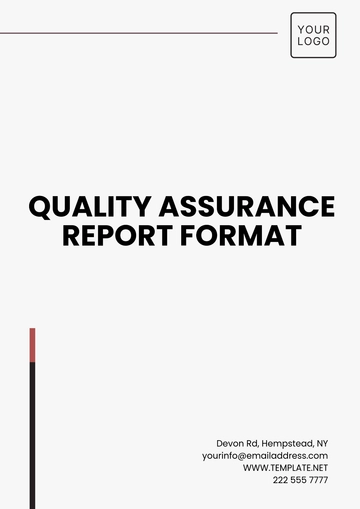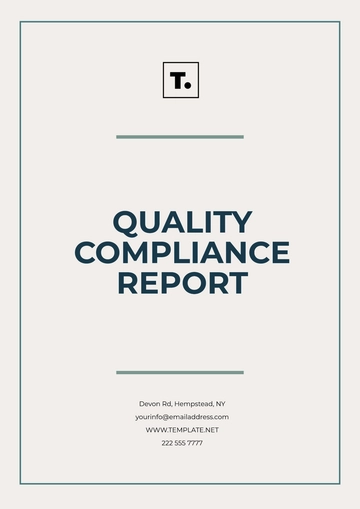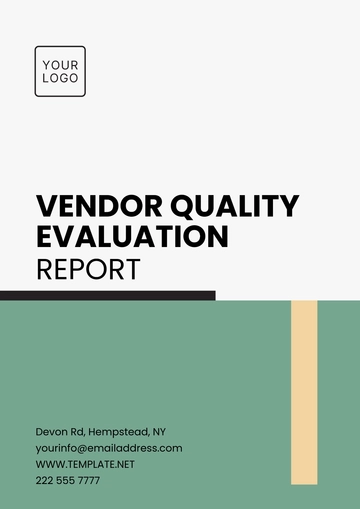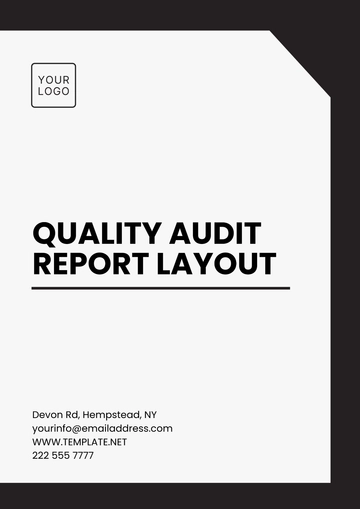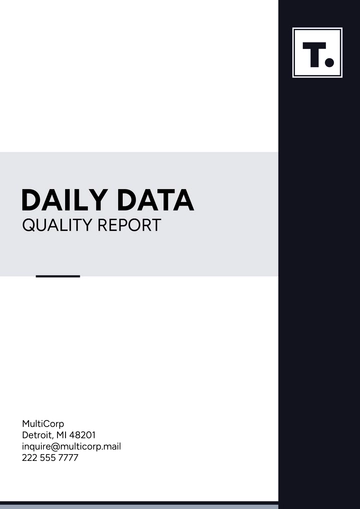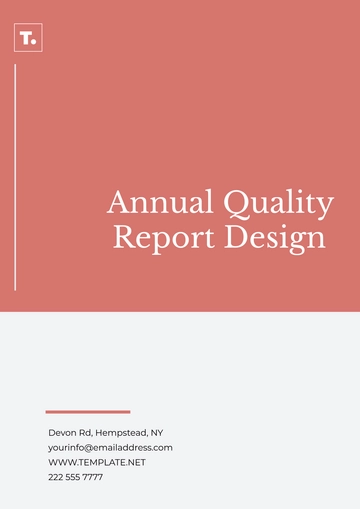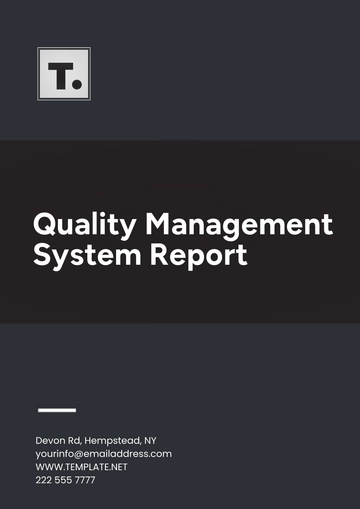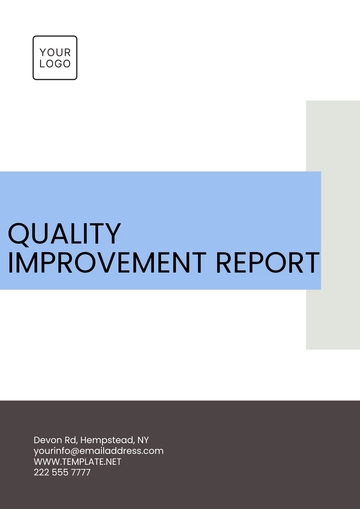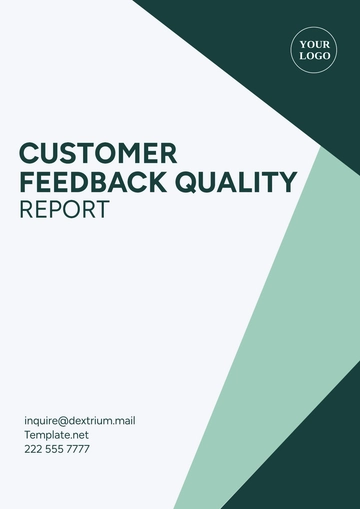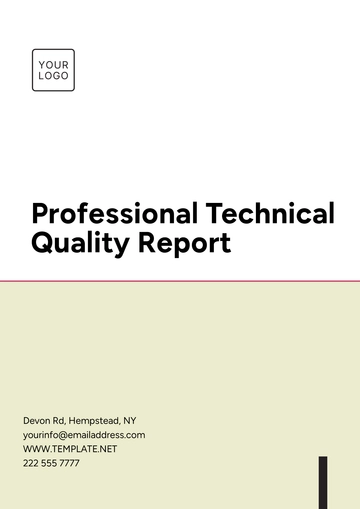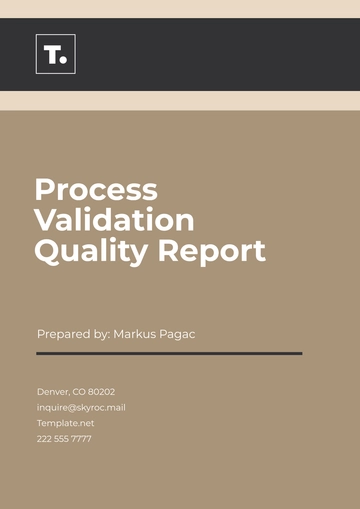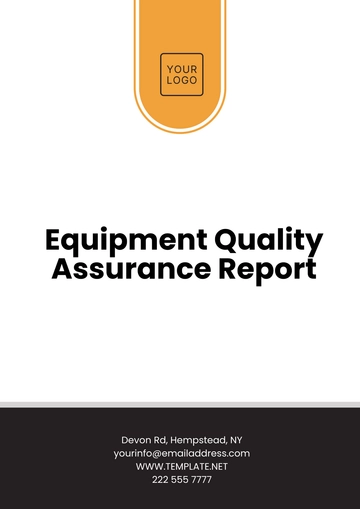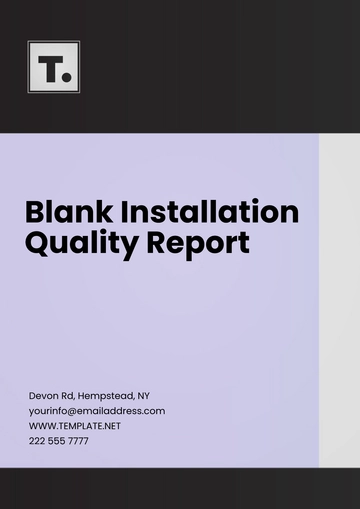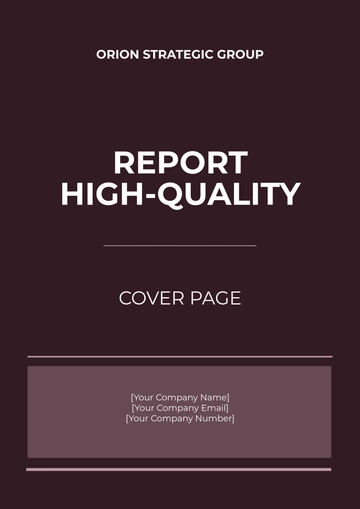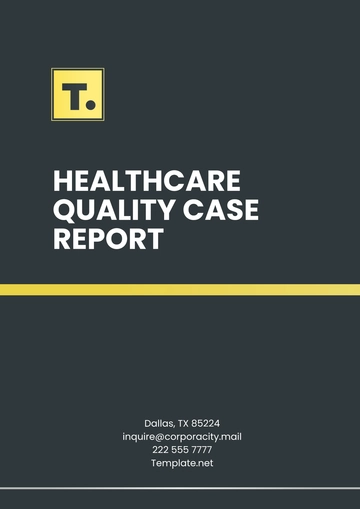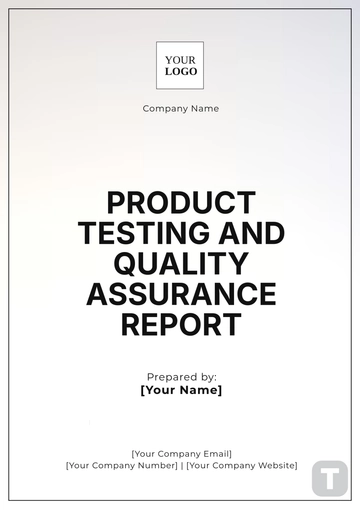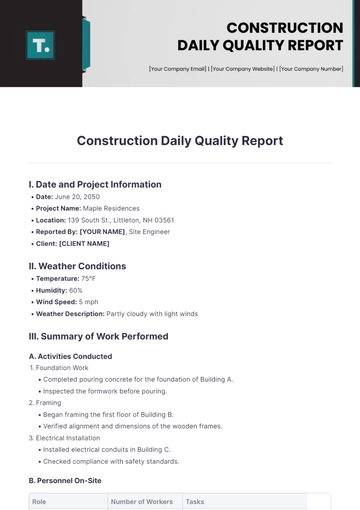Free Quality Improvement Report
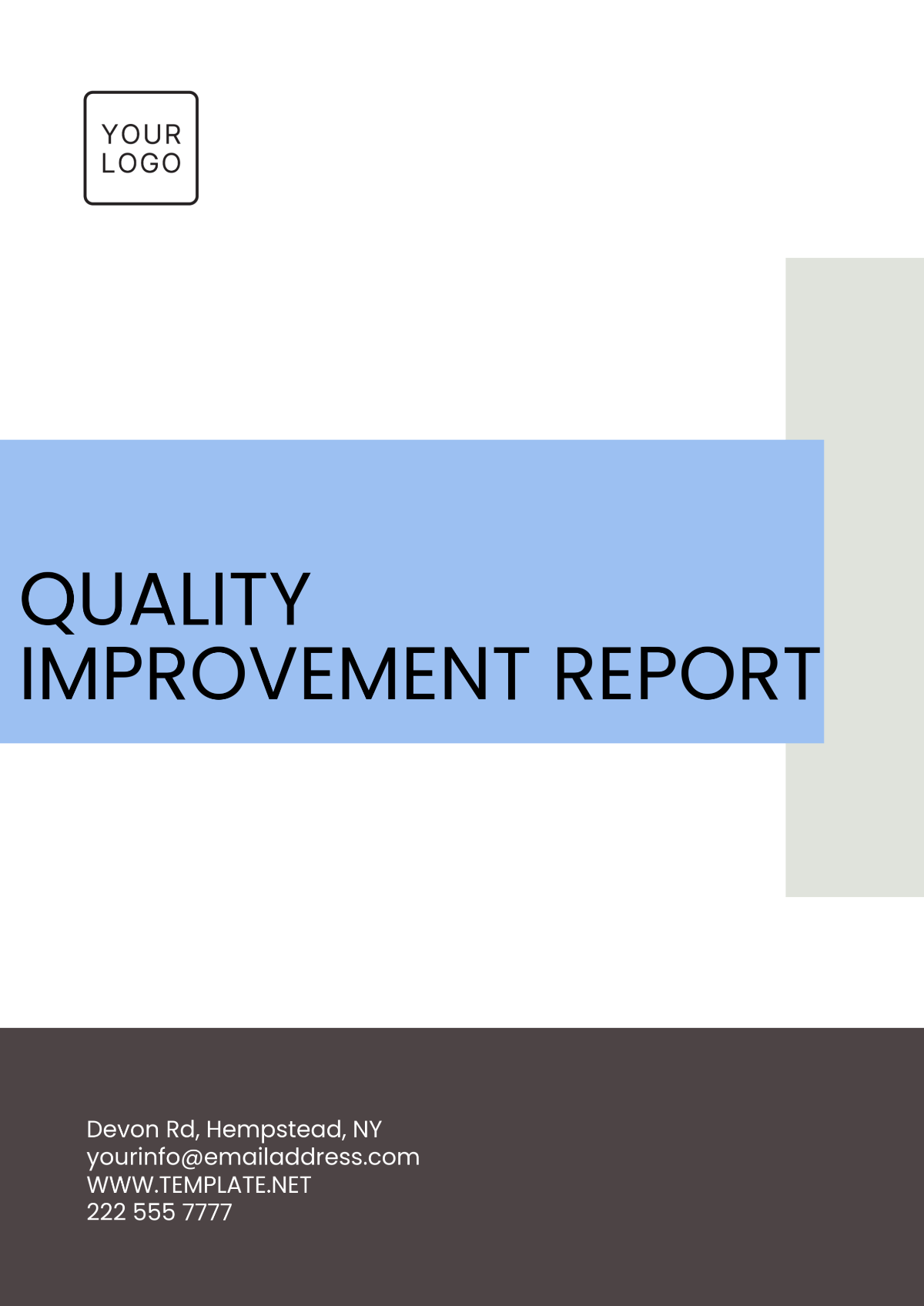
The primary objective of this report is to outline the strategy and initiatives taken towards enhancing quality standards. By analyzing current quality metrics and identifying areas of improvement, this document aims to serve as a comprehensive guide for stakeholders involved in quality management processes.
Introduction
The pursuit of quality improvement is crucial for sustaining competitive advantage and fulfilling customer expectations. This report will delve into various facets of quality management, including process optimization, customer feedback analysis, and continuous improvements.
Current Quality Metrics
Evaluating existing quality metrics is the foundation for identifying improvement opportunities. The following table summarizes the current quality metrics observed in our processes:
Metric | Definition | Current Value | Target Value |
|---|---|---|---|
Defect Rate | Percentage of defective products | 3% | 1% |
Customer Satisfaction Score | Overall customer satisfaction level | 7.5/10 | 9/10 |
Delivery Time Accuracy | Percentage of on-time deliveries | 85% | 95% |
Areas for Improvement
Through a detailed examination of the current quality metrics, several key areas requiring improvement have been identified:
Product Design: Reducing complexity in product design to minimize defects.
Training and Development: Enhancing employee skills through rigorous training programs.
Supplier Management: strengthening relationships with suppliers to ensure quality materials.
Process Automation: Implementing automation to reduce human error and increase efficiency.
Action Plan for Quality Improvement
The following section outlines a structured action plan designed to achieve the desired quality improvement outcomes:
Short-term Goals
Conduct cross-functional workshops to gather insights and ideas for quality improvements.
Implement a feedback loop for immediate corrective action on customer complaints.
Launch a pilot program to test the effectiveness of proposed process changes.
Long-term Goals
Invest in state-of-the-art technology to support advanced quality control measures.
Establish a dedicated quality management team to oversee and enforce standards.
Continuously monitor and evaluate quality metrics to ensure alignment with goals.
Implementation Strategy
The successful implementation of the quality improvement action plan requires a multi-faceted strategy involving various stakeholders and resources:
Activity | Responsible Party | Timeline | Resources Required |
|---|---|---|---|
Workshop Organization | Quality Manager | Q1 2024 | Meeting Room, Materials |
Feedback Loop Implementation | Customer Service Head | Q2 2024 | CRM Software, Training |
Pilot Program Launch | Process Engineer | Q3 2024 | Budget Allocation, Personnel |
Technology Upgrade | IT Department | Q1 2025 | Hardware, Software Licenses |
Challenges and Risks
Implementing quality improvement initiatives may encounter several challenges and risks, including:
Resistance to Change: Employees may be resistant to new processes and technologies.
Resource Allocation: Sufficient resources and budgets must be allocated to support initiatives.
Data Accuracy: ensuring the accuracy and reliability of quality data collected for analysis.
Conclusion and Recommendations
In conclusion, this quality improvement report highlights the existing challenges within our quality management system and provides a robust action plan aimed at addressing these issues. It is recommended to maintain an adaptable strategy that accommodates evolving market demands and customer expectations.
- 100% Customizable, free editor
- Access 1 Million+ Templates, photo’s & graphics
- Download or share as a template
- Click and replace photos, graphics, text, backgrounds
- Resize, crop, AI write & more
- Access advanced editor
The Quality Improvement Report Template, offered by Template.net, is a versatile tool designed to streamline your reporting process. Fully customizable and editable in our AI Editor Tool, this template allows you to tailor it to your specific needs. It's downloadable and printable, ensuring you can easily present your quality improvement initiatives with professional clarity and precision. Perfect for businesses aiming to enhance their performance metrics!
You may also like
- Sales Report
- Daily Report
- Project Report
- Business Report
- Weekly Report
- Incident Report
- Annual Report
- Report Layout
- Report Design
- Progress Report
- Marketing Report
- Company Report
- Monthly Report
- Audit Report
- Status Report
- School Report
- Reports Hr
- Management Report
- Project Status Report
- Handover Report
- Health And Safety Report
- Restaurant Report
- Construction Report
- Research Report
- Evaluation Report
- Investigation Report
- Employee Report
- Advertising Report
- Weekly Status Report
- Project Management Report
- Finance Report
- Service Report
- Technical Report
- Meeting Report
- Quarterly Report
- Inspection Report
- Medical Report
- Test Report
- Summary Report
- Inventory Report
- Valuation Report
- Operations Report
- Payroll Report
- Training Report
- Job Report
- Case Report
- Performance Report
- Board Report
- Internal Audit Report
- Student Report
- Monthly Management Report
- Small Business Report
- Accident Report
- Call Center Report
- Activity Report
- IT and Software Report
- Internship Report
- Visit Report
- Product Report
- Book Report
- Property Report
- Recruitment Report
- University Report
- Event Report
- SEO Report
- Conference Report
- Narrative Report
- Nursing Home Report
- Preschool Report
- Call Report
- Customer Report
- Employee Incident Report
- Accomplishment Report
- Social Media Report
- Work From Home Report
- Security Report
- Damage Report
- Quality Report
- Internal Report
- Nurse Report
- Real Estate Report
- Hotel Report
- Equipment Report
- Credit Report
- Field Report
- Non Profit Report
- Maintenance Report
- News Report
- Survey Report
- Executive Report
- Law Firm Report
- Advertising Agency Report
- Interior Design Report
- Travel Agency Report
- Stock Report
- Salon Report
- Bug Report
- Workplace Report
- Action Report
- Investor Report
- Cleaning Services Report
- Consulting Report
- Freelancer Report
- Site Visit Report
- Trip Report
- Classroom Observation Report
- Vehicle Report
- Final Report
- Software Report
